White bells: varieties, planting and care

Bells are not only beautiful flowers. Since the days of pagan Russia, such a plant has symbolized love, faith, honesty and obedience. According to popular beliefs, he is able to bring unmarried girls happy love, and people of advanced age - a calm old age. Numerous varieties of culture are so varied in shape, size and color that everyone will find for themselves what they like. In the article, we will consider in more detail the varieties of white bells, their planting and care.
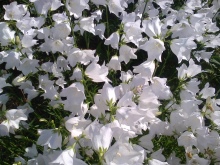
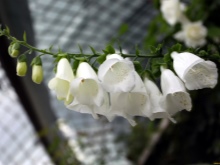
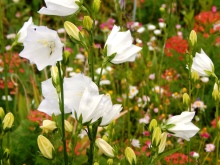
Peculiarities
Bells are familiar to many from childhood. This adorable sweet plant resembles a miniature bell. This culture also has another name - campanula. The natural shade is blue. However, thanks to the work of breeders, today it is possible to plant white, pink, purple, lilac, red, spotted and even two-color bells in the garden.
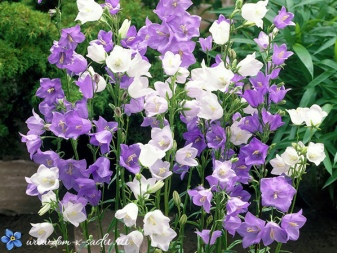
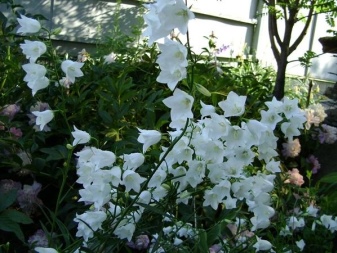
The main feature of the culture is a long growing season. By appearance, they are divided into summer green and winter green. In the first, the growing season begins in early spring (at an average temperature of +5 degrees) and lasts until late autumn, until the first frosts come. The latter maintain their vegetation all year round. So, with the onset of cold weather, such species can be placed in a warm room. The flower will not only preserve the green mass, but will bloom in March or April.
Campanula lifespan depends on their variety. Annuals and biennials are more common. Perennial herbaceous plants can live for about 6–8 years. There are not many species that can live for more than 20 years (for example, the lacto-flowered).
It should not be forgotten that the composition of the soil, heat, watering and light greatly affects the growth, development and longevity of a given culture.
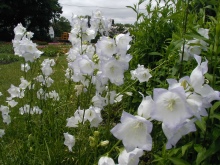
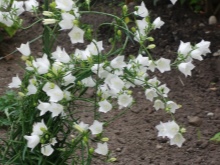
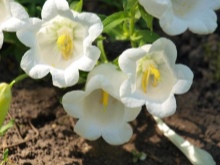
Types and varieties
Thanks to the work of breeders, the color range is quite rich today. Nowadays, white bells in the garden are no longer a rarity. Most often, campanula are used for alpine slides and rockeries. Consider a few common low-growing varieties.
- "Sartori". The height of the creeping bush is no more than 10–20 cm. Inflorescences are numerous in white, sometimes pink, with a diameter of up to 1.5 cm. The flower blooms from June to July. He belongs to biennials.
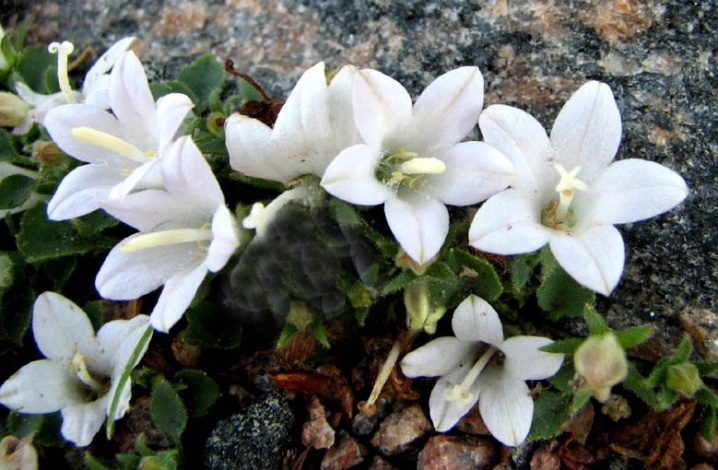
- Hoffmann. It is a biennial with branched shoots up to 30-50 cm. Inflorescences are numerous and large (up to 4 cm in diameter). The drooping flowers are white and cream in color, blooming in June and July. A flower hibernates with shelter in a temperate climate.
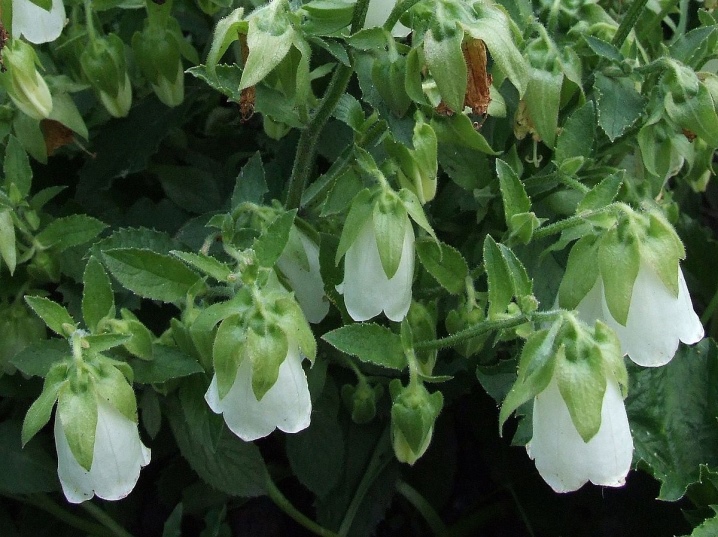
- Carpathian. One of the most popular perennial plant species. Plant height - no more than 25 cm. The bush grows rather quickly, forming a large lush ball of white and blue flowers. Long bloom lasts from June to September.
The variety requires protection from snails and slugs. Regular watering is required if dry weather is established.
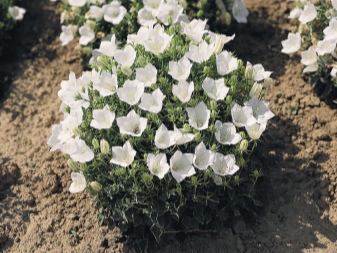
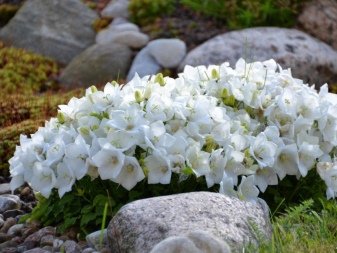
- Spoon-leaved. This variety has an amazing appearance. The plant is small, no more than 13-15 cm high. Miniature flowers no more than 1 cm are painted in sky-blue or snow-white color. The stems are filiform, forming a whole carpet of light green tone. The plant blooms all summer, becoming a real decoration of the suburban area.
It should be noted that this species is sown on its own and grows well, drowning out other plants around it.
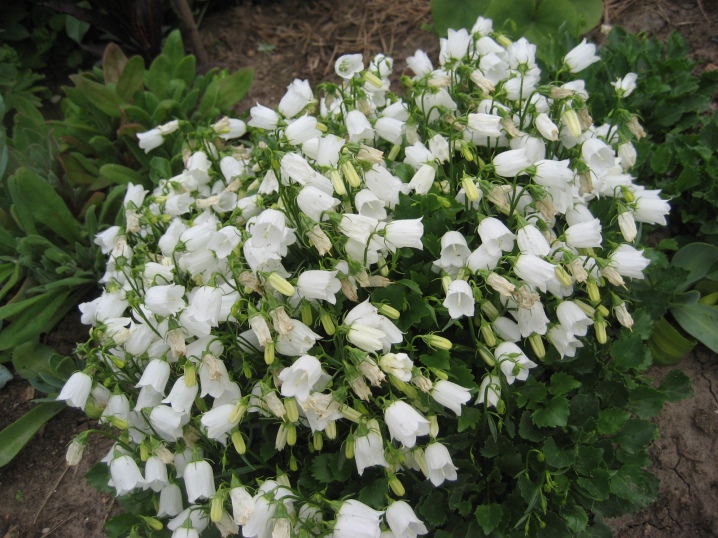
- "Bride and groom". Another name is "shooting star". Not so long ago, this type of bell was especially popular among gardeners.However, now to see such a beautiful plant is a great success due to the abundance of exotic varieties. The height of the plant is 10–20 cm. The “groom” blooms with white flowers, the “bride” - blue ones.
The variety is undemanding to care for, but needs a warm and sunny place without drafts.
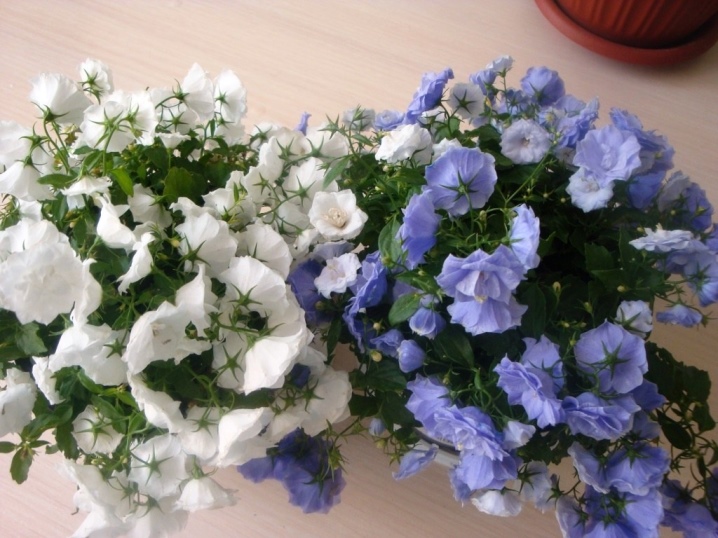
Tall bells are more common in our gardens. They look great in both group and single planting. Forest campanula is a shade-tolerant variety. They feel better in the shade of trees than in the sun. Several bells deserve special attention.
- Nettle leaf. Height - 1 m. The flower got its name due to the shape of the leaves. Inflorescences are large (up to 4 cm in diameter), collected in tassels. Bloom lasts from June to July.

- Broadleaf. The plant is quite tall and can reach 1.5 m. The stem is straight and with a lot of foliage. Single flowers are white to dark blue in color. The plant blooms all summer long, with peak flowering in July.
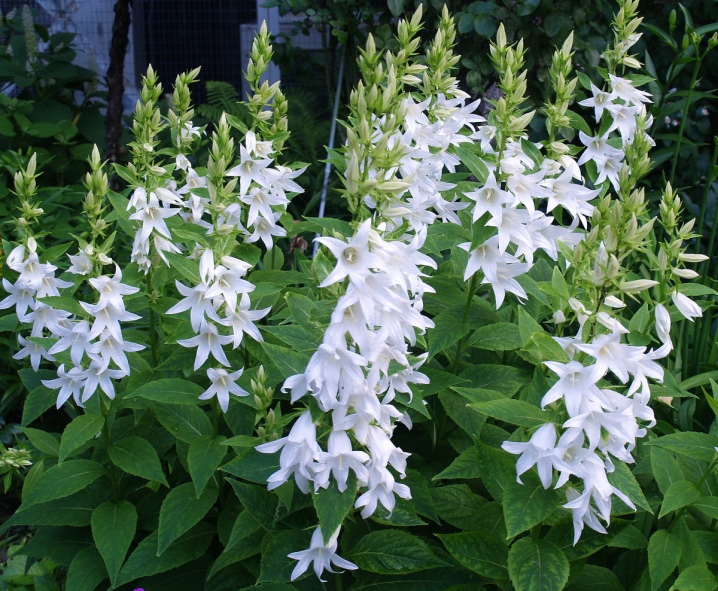
- Milk-flowered. A real giant, whose height reaches almost 2 m. There are also small bushes - no more than 40 cm. In any case, the flowering of this variety makes an amazing impression. The aroma of flowers is subtle and mesmerizing. Long bloom from June to the onset of frost.
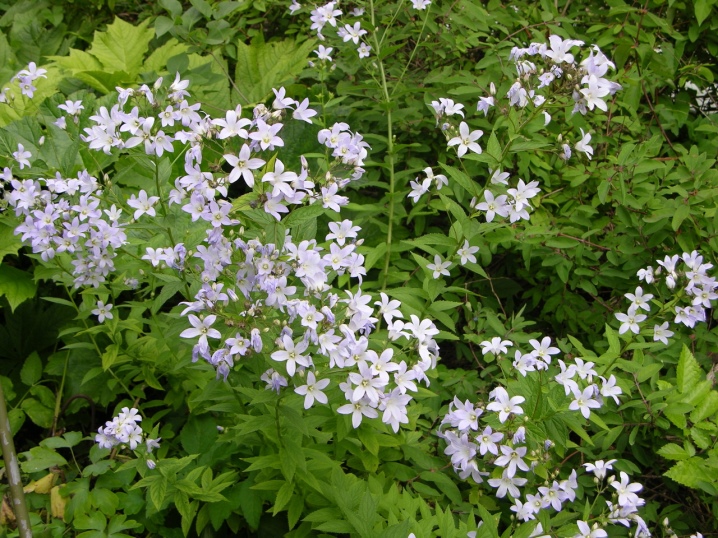
Planting and leaving
Before you start planting, you need to choose a place for planting and pre-prepare the soil. The main requirement for successful development is fertile, loose soil with a neutral pH. Loamy soil is not suitable for such a cute flower. Rotten humus and sand, as well as complex mineral fertilizers, should be applied to heavy and poor soil.
For spring planting, the planting pit should be prepared in the fall. The site must be cleared of weeds and fertilized in the form of peat, compost, wood ash, humus and sand. All this mixture is dug up so that the soil becomes homogeneous, at the end mineral fertilizers are added in the form of granules. In the spring, the site is once again cleared of weeds and debris, and a small weeding is performed.


The place where the bells will grow should be sunny or slightly darkened. Shady areas are not suitable, they are too stretched on them, the inflorescences become loose. Choose a plot for such a culture carefully. It is desirable to have a slight slope and good drainage so that excess moisture does not accumulate at the roots. Especially in spring, due to excess water, the roots can rot and freeze.
The distance between the holes should be 40-50 cm. The planting hole should be larger than the root system. Drainage in the form of crushed stone or broken brick is laid at the bottom. The seedling is placed in the hole, the roots are gently straightened, and covered with earth. After that, a hole is formed around the perennial, where water will be collected after watering.

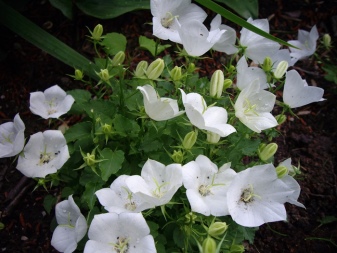
Graceful bells are quite undemanding to care for, especially in watering and feeding. Watering should be moderate. Especially in summer, when long dry weather without rain is established. The procedure is performed directly under the bush after sunset.
The soil should be moderately moist, without stagnant water in the root layer. And loosening the soil allows you to enrich the soil with additional air and get rid of weeds on the site, which are capable of taking nutrients and moisture, as well as drowning out the plant. Loosening of the soil around the bush must be carried out regularly. Do not forget about mulching, which can not only protect the bell from excessive moisture evaporation, but also enrich the soil with additional nutrition. They use compost or manure topped with bark or dry grass.


Plant nutrition is of utmost importance at every stage of development. This is the only way to achieve lush growth and abundant flowering. The first "feeding" is done in the spring.At this stage, the bush develops intensively, requiring nitrogen fertilizers for this. The second is carried out in May or June during the period of bud formation and flowering. It requires phosphorus-potassium fertilizing and organic matter in the form of liquid manure with the addition of wood ash. Summer "food" should be rich in potassium, you can enrich it with urea and superphosphates.
After flowering, bells are no longer so demanding in fertilizers, but they cannot be completely abandoned. From August and September, it is enough to make complex mineral fertilizing with the addition of organic matter in the form of mulch.


Examples in landscape design
Bells have not lost their relevance today and are widely used in the creation of landscape design for a small personal plot or a large garden. Low-growing campanula are most in demand in group plantings and flower beds. They also look great in a live border design. Especially such bells look advantageous when creating alpine slides and among stones. Tall varieties often take center stage in the flower bed, and shade-tolerant species look spectacular under the crown of trees.
Important! These street flowers are in perfect harmony with Turkish carnations, lilies, roses, aquilegia and geraniums. White campanula with deciduous ornamental plants such as hosta look advantageous.
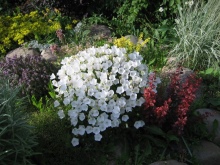
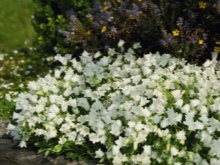
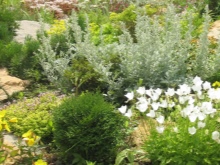
For growing and caring for bells, see the next video.







































































































The comment was sent successfully.